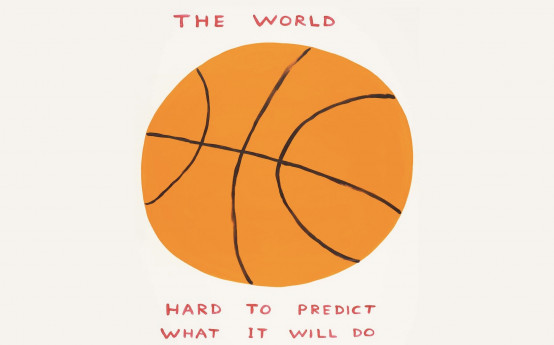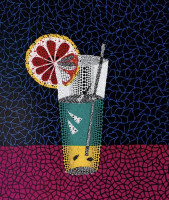The Global World is Your Oyster: How Globalization Has Changed the Art World

By Andrew Bay, UK
The art world has always been a reflection of society, and in recent years, globalization, as a worldwide phenomenon, has left a profound mark on various aspects of our collective and cultural environment, including the art world. Globalization is generally viewed as a process of integration between large scale social and economic factors, through the increase of trade and communication channels. It is therefore not surprising that the impact of globalization on the art world has been profound, shaping the way that artists, galleries, and collectors trade and share their services and expertise with one another.
One of the most notable changes in the art world as a result of globalization, has been the rise of popular events such as art fairs and biennials. In recent years, they have increasingly brought together a global network of gallery owners, curators, and artists, interconnected by their shared desire to create a space for creative exchange and communication. Artists are thus provided with a one of a kind opportunity to present their work to a worldwide audience and engage in dialogue with fellow creators. The proliferation of these events is a clear reflection of the growing importance of the global art market, as a central player on the world economic stage.
Increasingly, the scope and amount of transactions taking place in the art world has led to increased competition, with artists from all around the world vying for the attention of gallery owners, art sellers and buyers.
Globalization has thus led to the rise of a new breed of collectors from emerging economies, mostly from the Asian continent. By becoming influential participants in the global markets, Asian collectors, predominantly from China and Korea, have fundamentally altered the dynamics of the art world.
Nowadays, artists from every country in the world are participating in international exhibitions and events. More than ever before, this greater artistic and cultural interconnectivity has led to the emergence of new stylistic trends and movements in the art world. With an ever growing number of creative approaches, themes and investigative methods, the exploration of topics and cultural concerns which have global significance has now been made universally possible.
A noteworthy factor in the dissemination of contemporary art has been the unstoppable rise of digital innovation, which has made it far easier for artists to communicate and share their work with a global viewership. The importance of social media platforms like Instagram and Facebook cannot be understated, and they are key tools nowadays, for artists looking to reach new audiences and expand their influence. They provide new avenues for building communities, for promotion and for building creative networks on a global scale
On the other hand, up and coming, as well as already established artists and creators, may find themselves daunted by the pressures to create works that appeal to an international audience. This is due to increased competition in the art market which is now a global space. The risk of homogenization among artists may also arise from the insidious pressure to conform to widely advertised and heavily marketed popular styles and trends.
Undeniably, the impact of globalization on the art world has been complex and multifaceted. . It has presented novel prospects for artists to display their work to a global community, but also brought about amplified competition, and the requirement for creative minds to comply with specific trends and fashions. Global networks have reshaped the complex ways in which artists, galleries, and collectors interact with one another and have subsequently changed the thriving landscape of the global art market. However, moving forward, professionals working in the art markets, will have to continually adapt to these ongoing, open, cross-cultural and transactional dialogues which will carry on taking place on an international scale. On the other hand, creators will need to experiment with renewed forms of artistic expression, to remain true to their own original inspiration, and stay ahead of the exponential curves of our globalized world.
By Andrew Bay, UK
The art world has always been a reflection of society, and in recent years, globalization, as a worldwide phenomenon, has left a profound mark on various aspects of our collective and cultural environment, including the art world. Globalization is generally viewed as a process of integration between large scale social and economic factors, through the increase of trade and communication channels. It is therefore not surprising that the impact of globalization on the art world has been profound, shaping the way that artists, galleries, and collectors trade and share their services and expertise with one another.
One of the most notable changes in the art world as a result of globalization, has been the rise of popular events such as art fairs and biennials. In recent years, they have increasingly brought together a global network of gallery owners, curators, and artists, interconnected by their shared desire to create a space for creative exchange and communication. Artists are thus provided with a one of a kind opportunity to present their work to a worldwide audience and engage in dialogue with fellow creators. The proliferation of these events is a clear reflection of the growing importance of the global art market, as a central player on the world economic stage.
Increasingly, the scope and amount of transactions taking place in the art world has led to increased competition, with artists from all around the world vying for the attention of gallery owners, art sellers and buyers.
Globalization has thus led to the rise of a new breed of collectors from emerging economies, mostly from the Asian continent. By becoming influential participants in the global markets, Asian collectors, predominantly from China and Korea, have fundamentally altered the dynamics of the art world.
Nowadays, artists from every country in the world are participating in international exhibitions and events. More than ever before, this greater artistic and cultural interconnectivity has led to the emergence of new stylistic trends and movements in the art world. With an ever growing number of creative approaches, themes and investigative methods, the exploration of topics and cultural concerns which have global significance has now been made universally possible.
A noteworthy factor in the dissemination of contemporary art has been the unstoppable rise of digital innovation, which has made it far easier for artists to communicate and share their work with a global viewership. The importance of social media platforms like Instagram and Facebook cannot be understated, and they are key tools nowadays, for artists looking to reach new audiences and expand their influence. They provide new avenues for building communities, for promotion and for building creative networks on a global scale
Undeniably, the impact of globalization on the art world has been complex and multifaceted. . It has presented novel prospects for artists to display their work to a global community, but also brought about amplified competition, and the requirement for creative minds to comply with specific trends and fashions. Global networks have reshaped the complex ways in which artists, galleries, and collectors interact with one another and have subsequently changed the thriving landscape of the global art market. However, moving forward, professionals working in the art markets, will have to continually adapt to these ongoing, open, cross-cultural and transactional dialogues which will carry on taking place on an international scale. On the other hand, creators will need to experiment with renewed forms of artistic expression, to remain true to their own original inspiration, and stay ahead of the exponential curves of our globalized world.
















